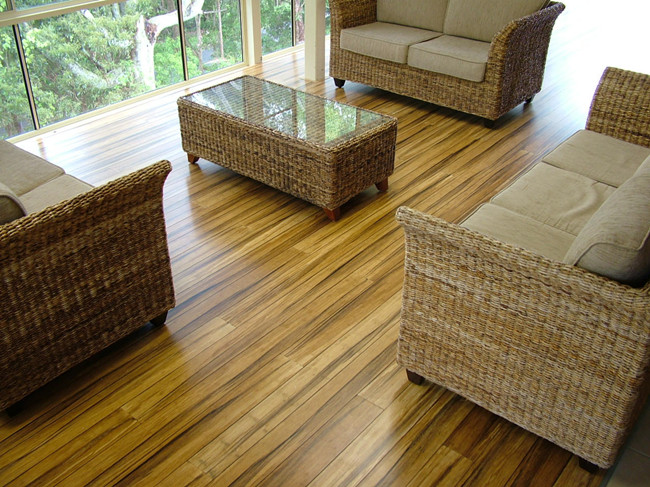Sustainable Bamboo Flooring
Nov 13, 2025, 7:30 AM
Everyone wants to renovate their home interior or office interiors at some point of time. The first thing they think about is that how your flooring will look, because its the flooring that creates an aura reflecting the beauty of your interiors. And very different and unique types of flooring has hit the remodeling market. One such flooring is 'Bamboo Flooring'. It is world's largest species of grass. It has a tube like structure and its outer shell is pretty much hard because of which they can be used in flooring applications. It's been on the market for quite sometime but still there are various opinion about this Bamboo flooring. Bamboo is environment friendly, it is considered as a green product and it is actually a grass and not a hardwood. It even grows back easily. In recent years bamboo flooring has became insanely popular for home or office 'wood flooring' choice. But the irony is that it is not actually real wood. It just gives the look of wood flooring. Since it is considered as green product, it is renewable and it grows back within a short span of three years. it is imported from southern part of china in major quantity.
The round tubes of the bamboo are converted into flooring strips by slicing the tubes. In order to remove the starch the strips are boiled, it is then kept for drying. After the strips has been dried, they are laminated and then the boards are pulverized into strip flooring, finally it is then treated with a preservative.
It also gives you a choice which type of flooring you want, horizontal or vertical bamboo flooring. They both have their differences. As it is a grass so the strands can be laid out either horizontally or vertically. Horizontal bamboo flooring is the type of bamboo flooring that looks like bamboo floor. Strands or stalks are divided into sections and then these sections are laid in a horizontal fashion. Whereas in vertical flooring the strands are laid vertically and using adhesives they are adhered together. It is similar to horizontal flooring but you will be able to distinguish them easily as vertical flooring is more textured rich. It is up to you to choose your style. In terms of hardness both are similar. And the prices for both the styles also hover in the same region.
As I said earlier, it is a grass, then probably your next question will be related to its durability. Since they are put together by using adhesives, the hardness and the durability come from the adhesives. For cheap bamboo floorings you will find softer bamboo floors and for more expensive bamboo floorings you can get Brazilian Walnut which is extremely hard and expensive. It's durability depends on three factors, the quality of bamboo, added materials and stalk placements.
Stalk Placements: Bamboo flooring is mostly made by laying the stalks in cross direction.
Adhesives: This is the thing that makes the bamboo flooring harder and durable. All the grass stalks are stuck together by adhesives. Using large quantities of adhesives means the bamboo flooring will be much harder.
Type of Bamboo: The bamboo, which are harvested at a later stage are more durable than those who are harvested at a younger stage.
There are various methods from which the bamboo grass is converted into wood like planks to be used for flooring applications. Every product is manufactured with some specific characteristics. It is up to you to choose that which type of bamboo will be suitable for your work.
If you cannot afford to have a real hardwood flooring then this is definitely for you. It is cheap, as compared to real hardwood. In addition to this it looks great on the floor provides a natural and rich feel. Eco-friendly, cheap, great look and feel, durable, current trend in renovation, what else you need.



 皖公网安备 34180202000049号
皖公网安备 34180202000049号